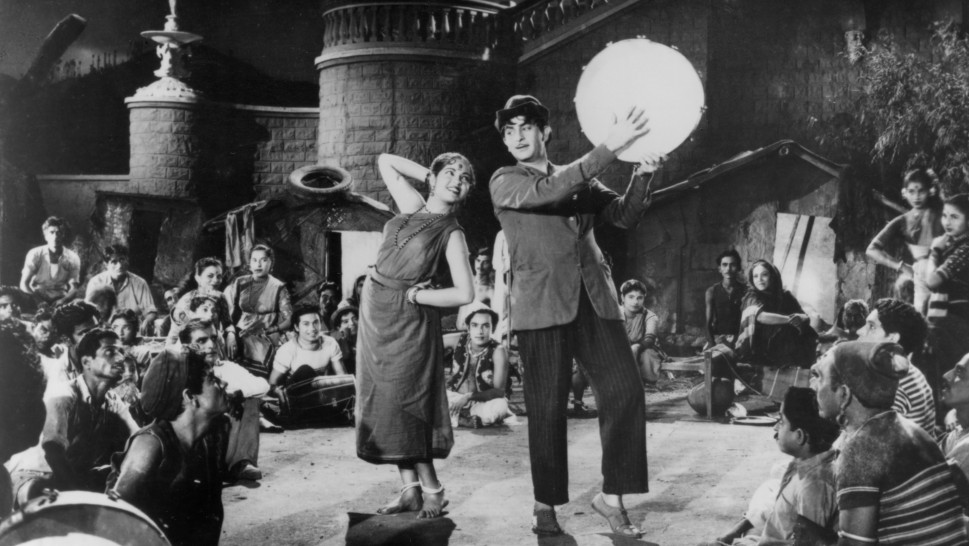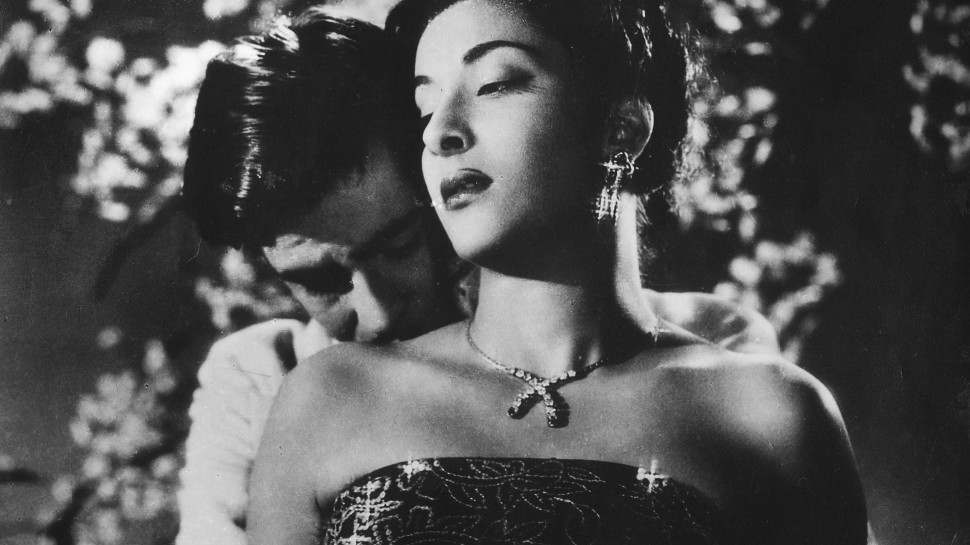


Raj Kapoor and the Golden Age of Indian Cinema
As a director, producer and star, Raj Kapoor (1924-88) became one of India’s leading filmmakers during the so-called “golden age” of Indian cinema in the first two decades following the nation’s independence in 1947. Kapoor is in some ways a lynchpin, a Janus figure, with one face looking back to the aspirations of the era of independence and the other toward the present state of star-driven Hindi cinema with its mass appeal and global audience.
As the son of a prominent stage actor, Kapoor was well positioned to take a leading role within Indian filmmaking, since much of the impetus for remaking the nation’s cinema came from the world of Indian theater. Prithviraj Kapoor was a member of the Indian People’s Theatre Association (IPTA), a leftist organization formed in 1942 with the aim of using theater to bring greater political awareness to audiences. Many of its members were interested in film, including K.A. Abbas, a film critic who went on to write and direct for the cinema, and future filmmaker Ritwik Ghatak. The cinematic trends that interested this group included Soviet silent cinema, especially Pudovkin, German expressionism, Italian neo-realism and some of the more populist elements of American cinema—specifically, Chaplin and Capra.
Out of this mix would be born India’s “parallel cinema,” those branches of filmmaking less concerned with commercial considerations and more interested either in politics or aesthetics, whether realist or avant-garde. Yet many of those influenced by the IPTA also went on to work in mainstream cinema, like Kapoor, whose work of the 1950s seeks to bring a concern about poverty and caste to the blend of music and melodrama so popular within the Hindi-language film industry. The best comparison is with Chaplin: a charismatic performer becomes a director and producer of films that seek to merge popular entertainment with sentimentality and populist politics.
Doing so made Kapoor hugely popular, as did his frequent on-screen pairing with Nargis, one of the biggest stars and most acclaimed actresses in Indian film history. At the height of his fame in the mid-1950s, following the releases of Awaara and Shree 420, Kapoor was a celebrity not just in India but throughout southern Asia, the Arab world, Iran, Turkey, Africa and the Soviet Union as well. At the same time, he helped to expand the stylistic vocabulary of Hindi cinema with his use of expressionist shadows and deep focus. In later years, working in color, he was among those who began importing increasingly lengthy, elaborate and spectacular song sequences into Hindi film.
Kapoor’s output slowed in the 1960s as he began work on what he envisioned as a trilogy of autobiographical films about the loves and heartbreaks of a popular entertainer. The result was one long film in three parts, Mera Naam Joker, released in 1970 to a decidedly mixed reception. After this debacle, Kapoor’s career recovered with his next film, Bobby, which made a star of his son Rishi, but he would go on to direct only three more films.
In his lifetime, Kapoor’s most popular work was released in the US only in abbreviated versions, and he never attained celebrity here. Now RK Films has made new, English-subtitled 35mm prints of seven of Kapoor’s most important films, presented by the Harvard Film Archive and the South Asian Initiative, with the help of the Toronto International Film Festival and the International Indian Film Academy. — David Pendleton












